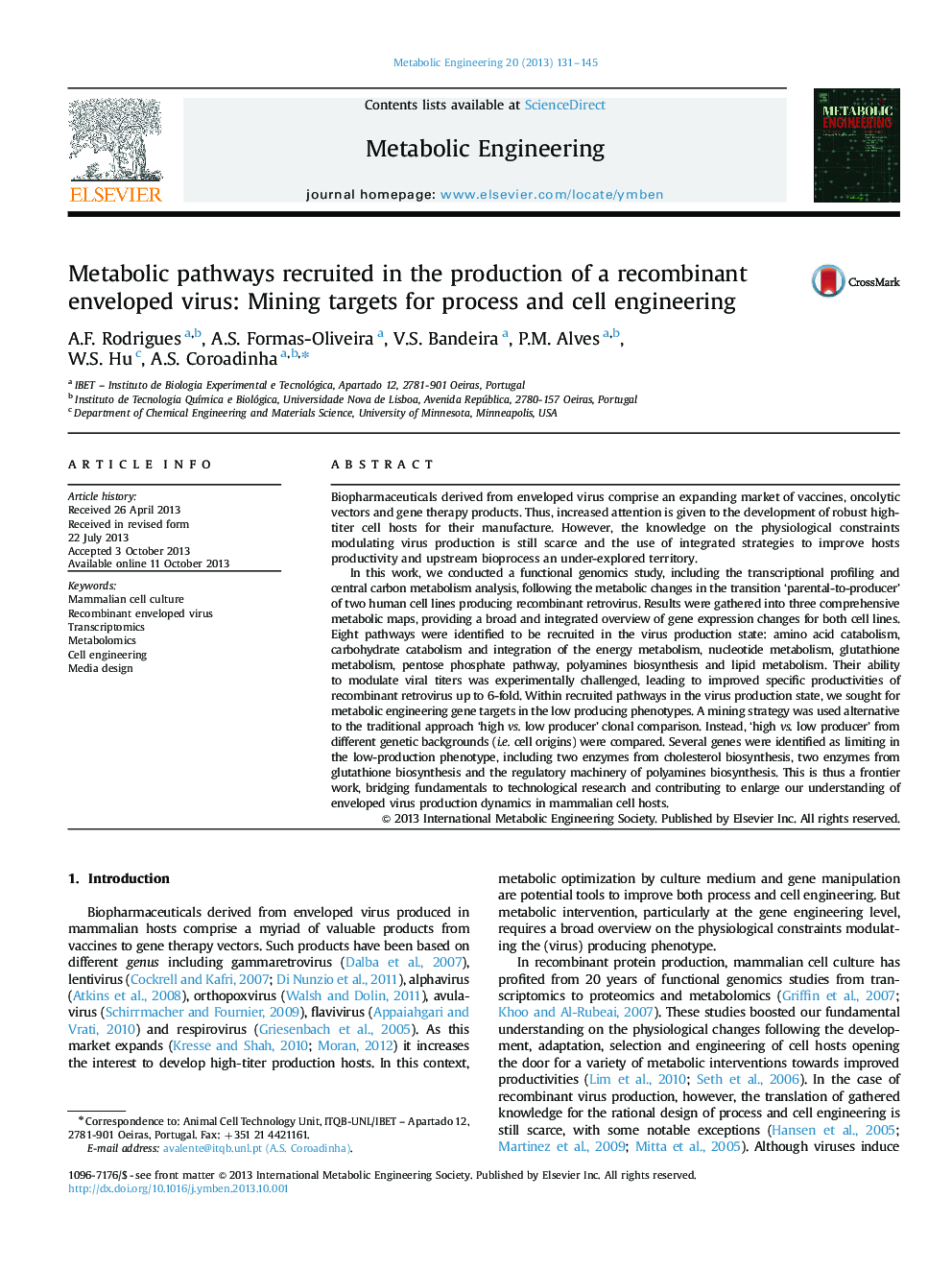| Article ID | Journal | Published Year | Pages | File Type |
|---|---|---|---|---|
| 6494697 | Metabolic Engineering | 2013 | 15 Pages |
Abstract
In this work, we conducted a functional genomics study, including the transcriptional profiling and central carbon metabolism analysis, following the metabolic changes in the transition 'parental-to-producer' of two human cell lines producing recombinant retrovirus. Results were gathered into three comprehensive metabolic maps, providing a broad and integrated overview of gene expression changes for both cell lines. Eight pathways were identified to be recruited in the virus production state: amino acid catabolism, carbohydrate catabolism and integration of the energy metabolism, nucleotide metabolism, glutathione metabolism, pentose phosphate pathway, polyamines biosynthesis and lipid metabolism. Their ability to modulate viral titers was experimentally challenged, leading to improved specific productivities of recombinant retrovirus up to 6-fold. Within recruited pathways in the virus production state, we sought for metabolic engineering gene targets in the low producing phenotypes. A mining strategy was used alternative to the traditional approach 'high vs. low producer' clonal comparison. Instead, 'high vs. low producer' from different genetic backgrounds (i.e. cell origins) were compared. Several genes were identified as limiting in the low-production phenotype, including two enzymes from cholesterol biosynthesis, two enzymes from glutathione biosynthesis and the regulatory machinery of polyamines biosynthesis. This is thus a frontier work, bridging fundamentals to technological research and contributing to enlarge our understanding of enveloped virus production dynamics in mammalian cell hosts.
Related Topics
Physical Sciences and Engineering
Chemical Engineering
Bioengineering
Authors
A.F. Rodrigues, A.S. Formas-Oliveira, V.S. Bandeira, P.M. Alves, W.S. Hu, A.S. Coroadinha,
